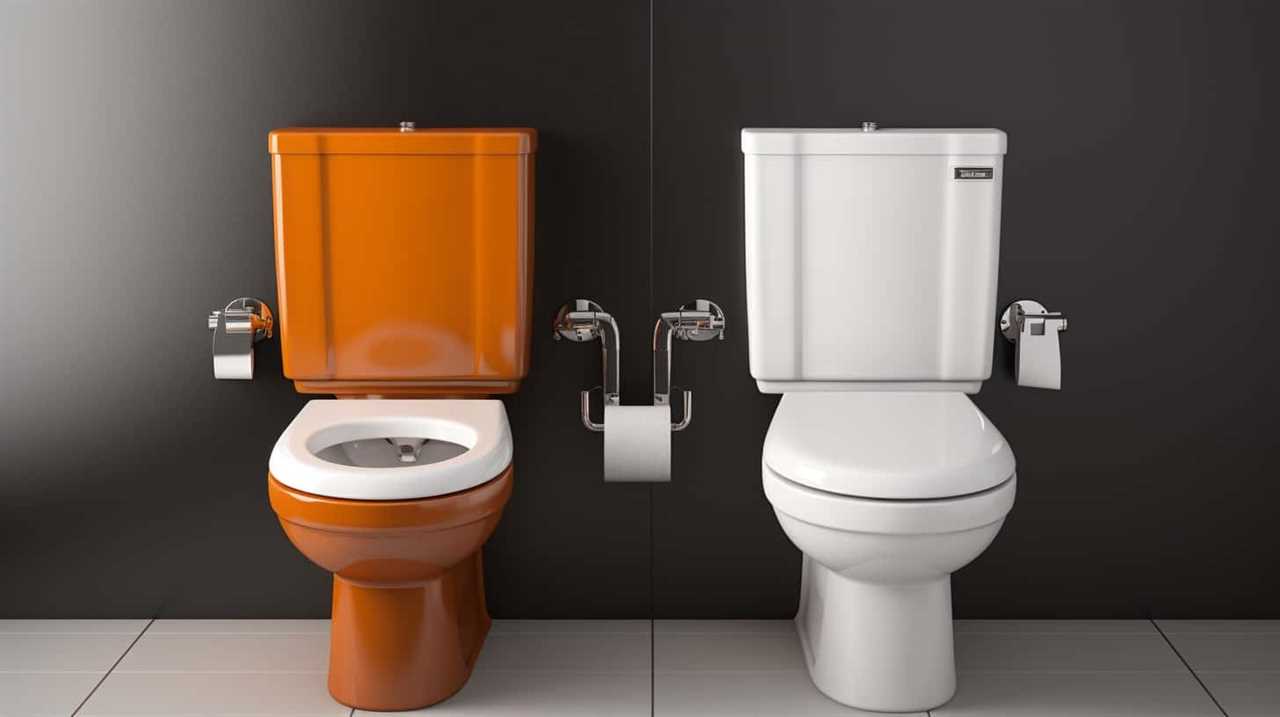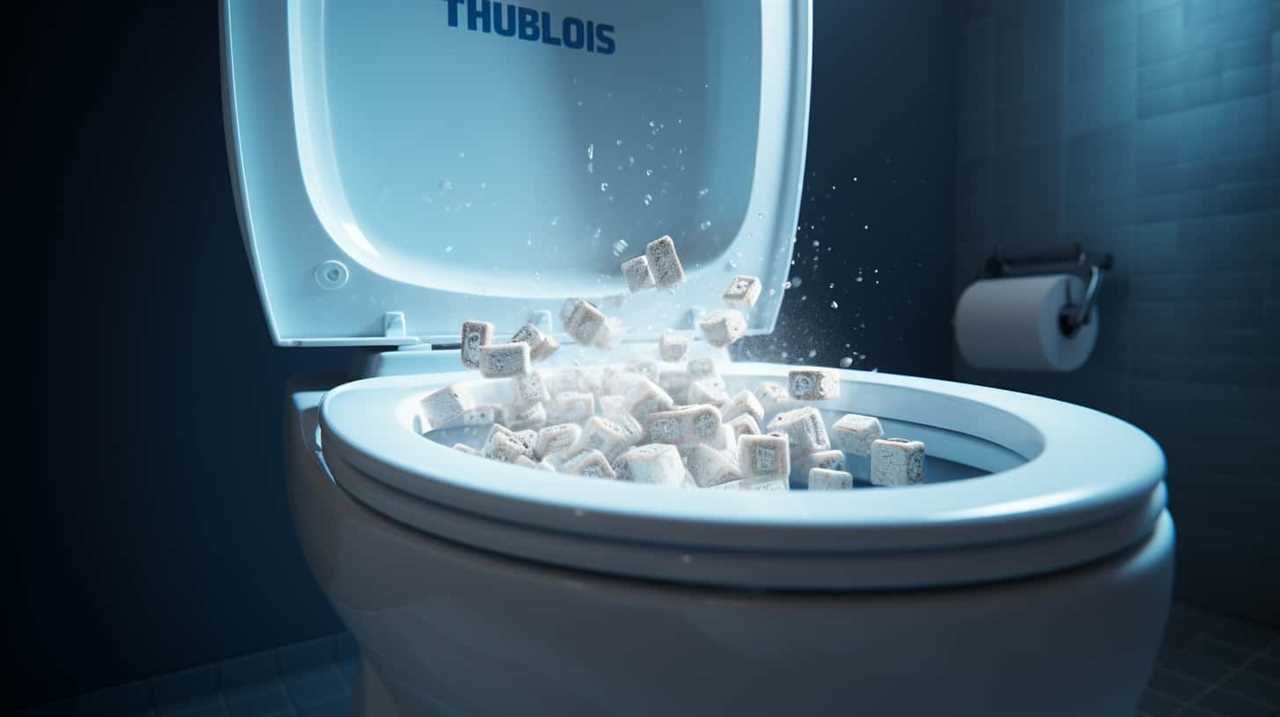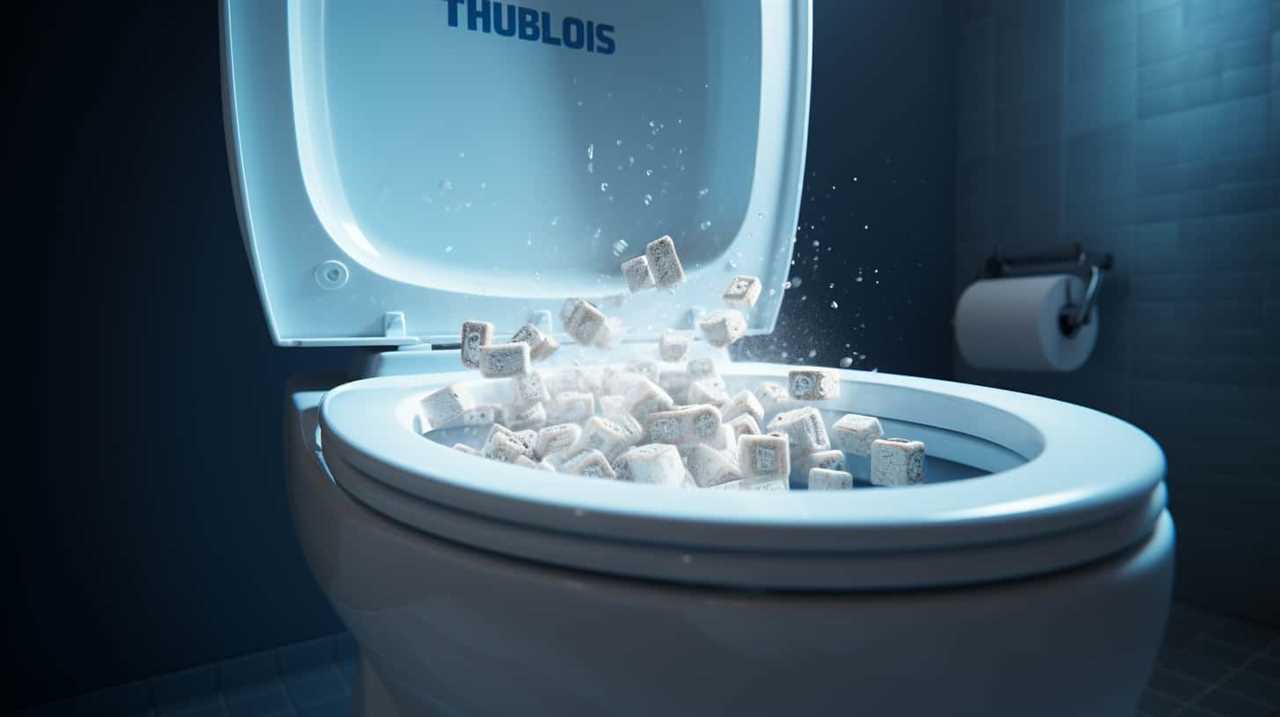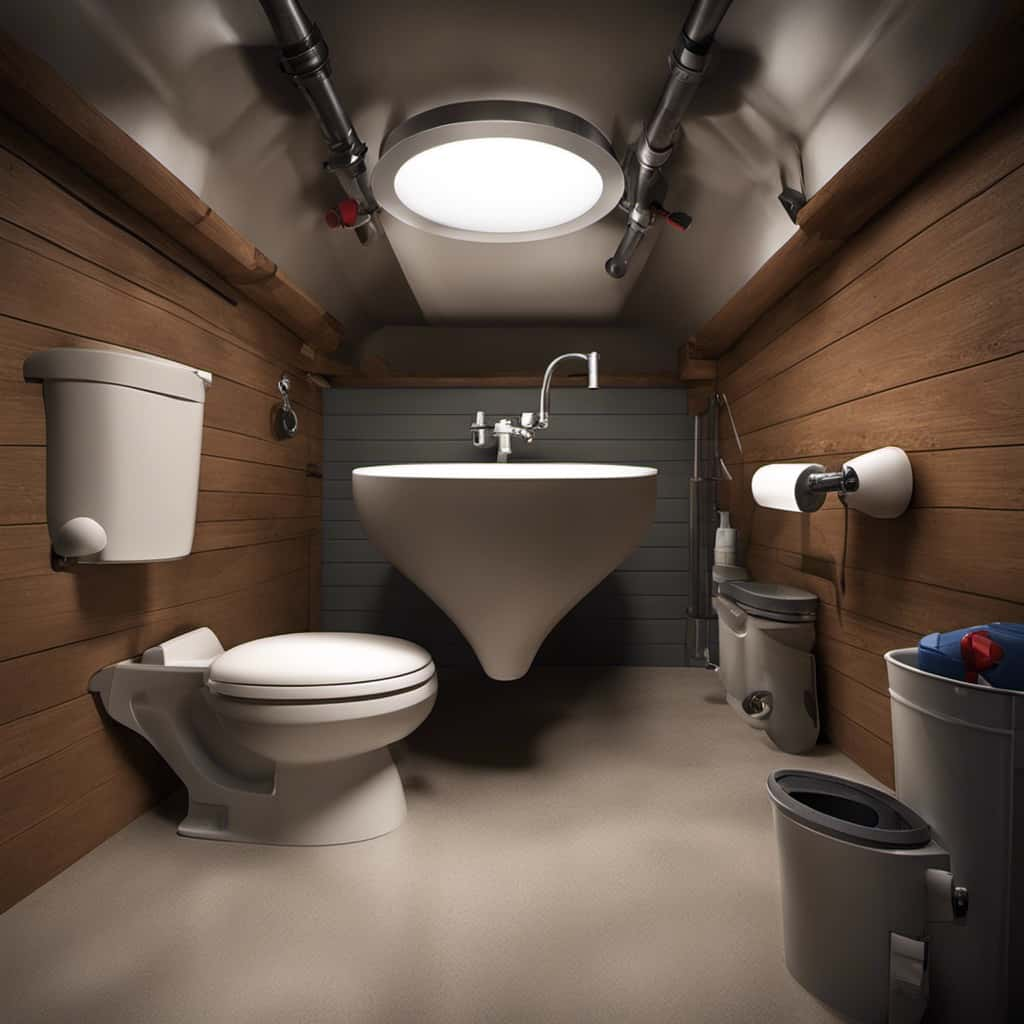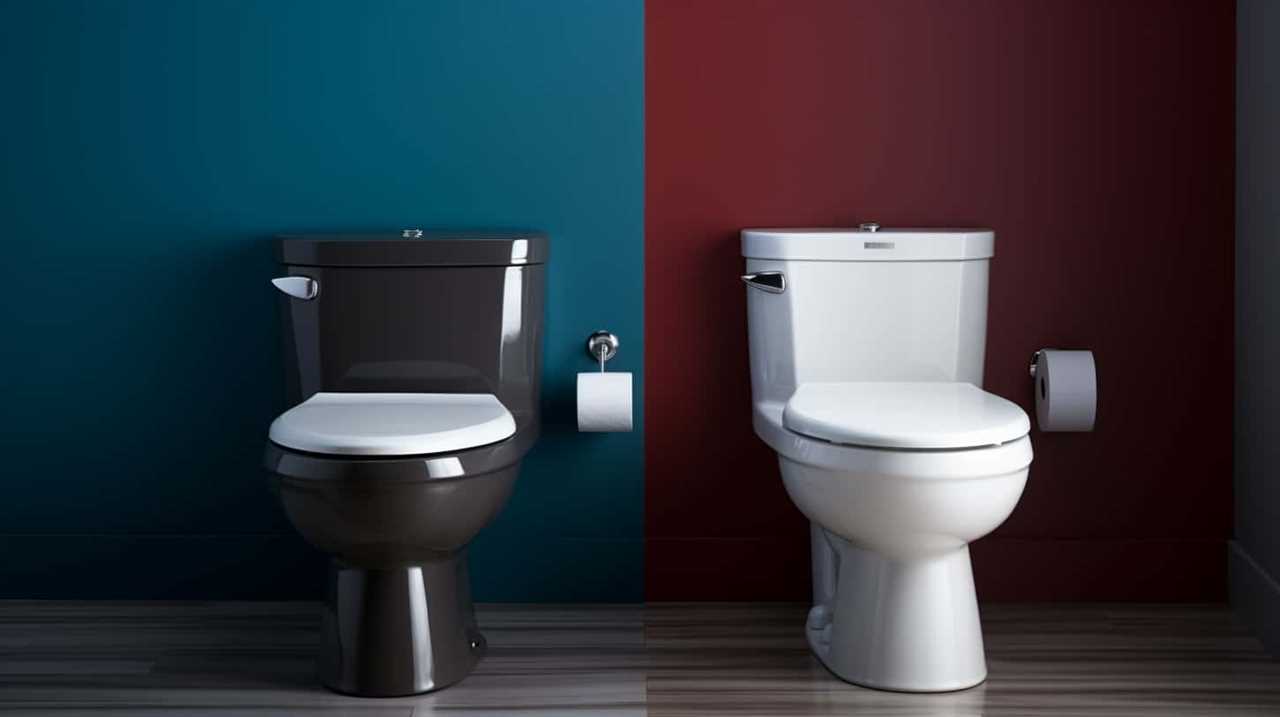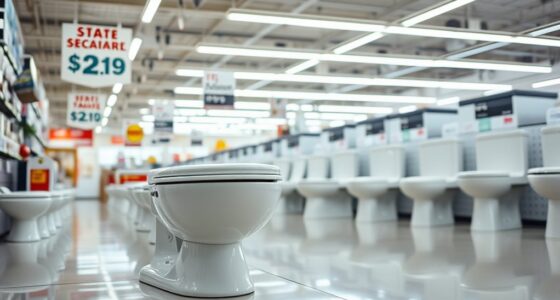Are you experiencing a rather inconvenient situation involving a napkin in your toilet? Fret not, for we have the solution for you.
In this concise guide, we will provide you with the step-by-step instructions to retrieve that napkin efficiently.
From gathering the necessary supplies to utilizing a plunger or a toilet auger, we’ve got you covered.
With our technical expertise and mastery of the subject, you’ll be able to tackle this challenge with ease.

Key Takeaways
- Using a plunger: Position the plunger over the drain hole, ensure a tight seal, press down firmly and pull up quickly, repeat plunging motion several times.
- Trying a toilet auger or alternatives: Consider using a toilet auger specifically designed for clearing clogs, or try alternatives such as a toilet plunger, hot water and dish soap, wet/dry vacuum, or professional help.
- Utilizing a wet/dry vacuum: A wet/dry vacuum is a powerful tool for unclogging toilets and can quickly and efficiently remove a napkin. It is also beneficial for regular household cleaning and maintaining a clog-free toilet.
- Calling a professional plumber if necessary: Instances when it’s best to call a plumber include multiple clogged fixtures, continuous clogging indicating an underlying plumbing issue, or sewer line issues that require specialized equipment and expertise.
Gather Necessary Supplies
We gather the necessary supplies to effectively remove a napkin from the toilet.
When faced with this situation, it’s crucial to have the right tools on hand. Firstly, grab a pair of disposable gloves to protect your hands from any unpleasantness. Next, you’ll need a pair of long-handled tongs or a sturdy pair of kitchen tongs. These will allow you to reach into the toilet without having to touch the napkin directly.
Additionally, keep a heavy-duty trash bag nearby for alternative disposal methods. Once the napkin has been successfully removed, it’s important to take preventative measures to avoid future toilet mishaps. This includes reminding everyone in the household to only flush toilet-friendly items and providing clear instructions on proper waste disposal.
Use a Plunger
Sometimes, we can dislodge the napkin from the toilet by using a plunger. To do this, start by positioning the plunger over the drain hole, ensuring a tight seal. Press down firmly, then pull up quickly. This creates suction that can help to dislodge the napkin. Repeat this plunging motion several times, increasing the force each time.
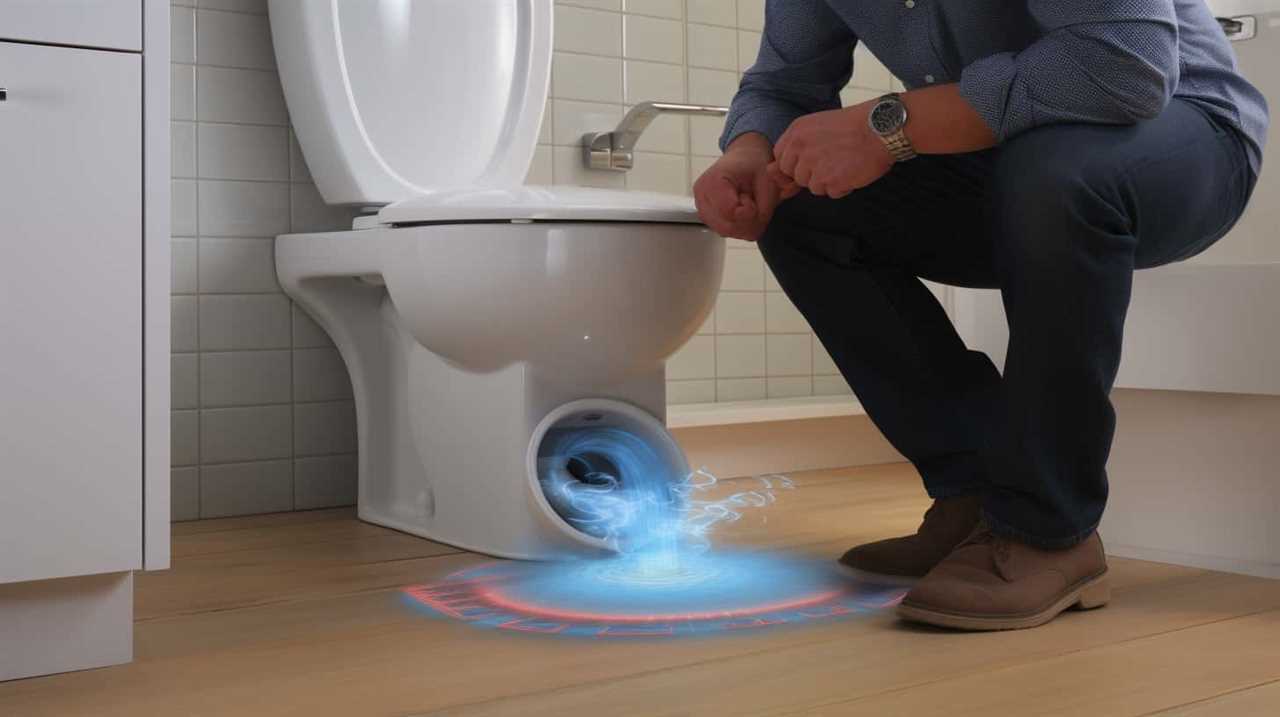
If the napkin is stubborn, you may need to try alternative methods such as using a toilet auger or applying hot water to the toilet bowl.
Once the napkin is successfully removed, it’s essential to take preventive measures to avoid future incidents. Make sure to dispose of napkins properly in the trash bin and educate others on the importance of proper disposal. Additionally, consider using toilet paper instead of napkins, as it breaks down more easily in water.
Try a Toilet Auger
To effectively remove a napkin from the toilet, we can employ the use of a toilet auger. A toilet auger is a tool specifically designed for clearing clogs in toilets.
Here are four alternatives to using a toilet auger and some tips for preventing items from falling into the toilet:
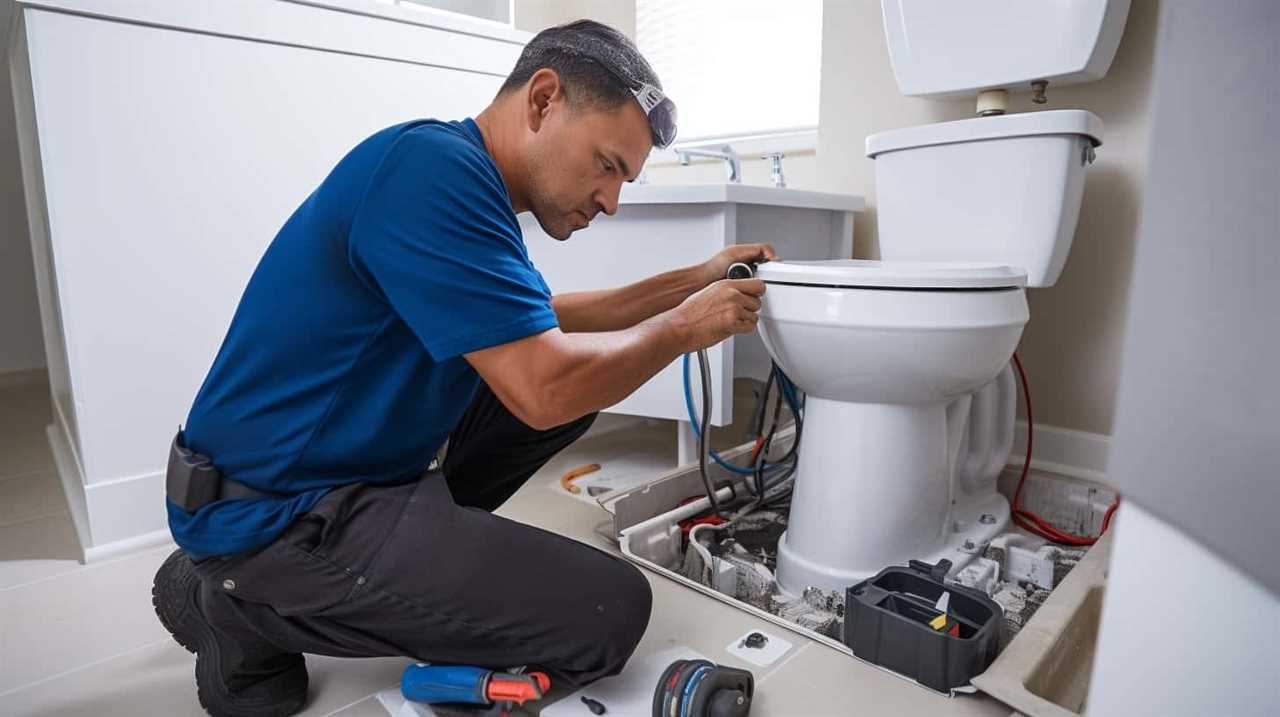
- Toilet Plunger: A plunger can be an effective alternative to a toilet auger for minor clogs caused by a napkin. Make sure to use a plunger specifically designed for toilets and follow proper plunging techniques.
- Hot Water and Dish Soap: Pouring a mixture of hot water and dish soap into the toilet may help loosen the napkin and allow it to flush away.
- Wet/Dry Vacuum: If the napkin is visible and reachable, using a wet/dry vacuum can help suck it out of the toilet bowl.
- Professional Help: If all else fails, contacting a professional plumber may be necessary to safely remove the napkin without causing further damage to the toilet.
To prevent items from falling into the toilet in the future, it’s crucial to:
- Use toilet lid locks or childproofing devices to prevent children from accidentally dropping items.
- Avoid flushing anything other than toilet paper and human waste.
- Keep small items, such as napkins, tissues, and toys, away from the toilet area to minimize the risk of accidental drops.
Utilize a Wet/Dry Vacuum
How can we effectively utilize a wet/dry vacuum to remove a napkin from the toilet? A wet/dry vacuum is a powerful tool that can help us tackle various household cleaning tasks, including unclogging toilets. When it comes to removing a napkin from the toilet, a wet/dry vacuum can be very effective. Here are some tips for using a wet/dry vacuum for this purpose:
| Benefits of using a wet/dry vacuum for household cleaning | Tips for maintaining a clog-free toilet |
|---|---|
| Powerful suction to remove debris and clogs | Regularly clean the toilet |
| Versatile tool for various cleaning tasks | Avoid flushing non-flushable items |
| Quick and efficient way to unclog toilets | Use a plunger for minor clogs |
Call a Professional Plumber if Necessary
If the clog persists or if we encounter any other issues, we should call a professional plumber for assistance. While there are several DIY methods for unclogging a toilet, there are instances where a plumber’s expertise is required. Here are four situations when it’s best to call a plumber:
- Stubborn Clogs: If our attempts to unclog the toilet using various methods have failed, it’s time to seek professional help. Plumbers have the necessary tools and experience to tackle even the toughest clogs.
- Multiple Clogged Fixtures: If other fixtures in the house, such as sinks or showers, are also experiencing issues, it could indicate a more significant problem with the plumbing system. A plumber will be able to diagnose and address the underlying issue.
- Continuous Clogging: If the toilet keeps clogging frequently, it could be a sign of an underlying plumbing problem. A plumber can assess the situation and offer a long-term solution.
- Sewer Line Issues: If we suspect that the clog is caused by a blockage in the sewer line, it’s crucial to call a plumber immediately. Sewer line issues require professional expertise and specialized equipment to resolve.
Frequently Asked Questions
Can I Use Any Type of Plunger to Remove the Napkin From the Toilet?
We can use alternative methods to unclog toilets, such as using a toilet auger or drain snake. However, it is crucial to prevent toilet clogs by avoiding flushing items like napkins, which can cause blockages.

What Should I Do if the Plunger Doesn’t Work?
If the plunger fails, we recommend exploring alternative methods to remove the napkin from the toilet. DIY solutions such as using a wet/dry vacuum or a plumbing snake can be effective.
Can a Wet/Dry Vacuum Damage the Toilet or Plumbing System?
A wet/dry vacuum can potentially damage the toilet or plumbing system if used improperly. It is important to exercise caution and follow proper procedures. Alternatives to consider include using a toilet auger, which is specifically designed for such tasks.
Are There Any Safety Precautions I Should Take When Using a Toilet Auger?
When using a toilet auger, there are important safety precautions to consider. Proper toilet auger usage involves wearing protective gloves and goggles, ensuring the auger is securely attached, and following the manufacturer’s instructions for safe operation.
How Much Does It Typically Cost to Hire a Professional Plumber for This Type of Issue?
Hiring a professional plumber for this type of issue can vary in cost depending on factors such as location and the severity of the problem. It’s important to get multiple quotes to ensure you’re getting the best deal.
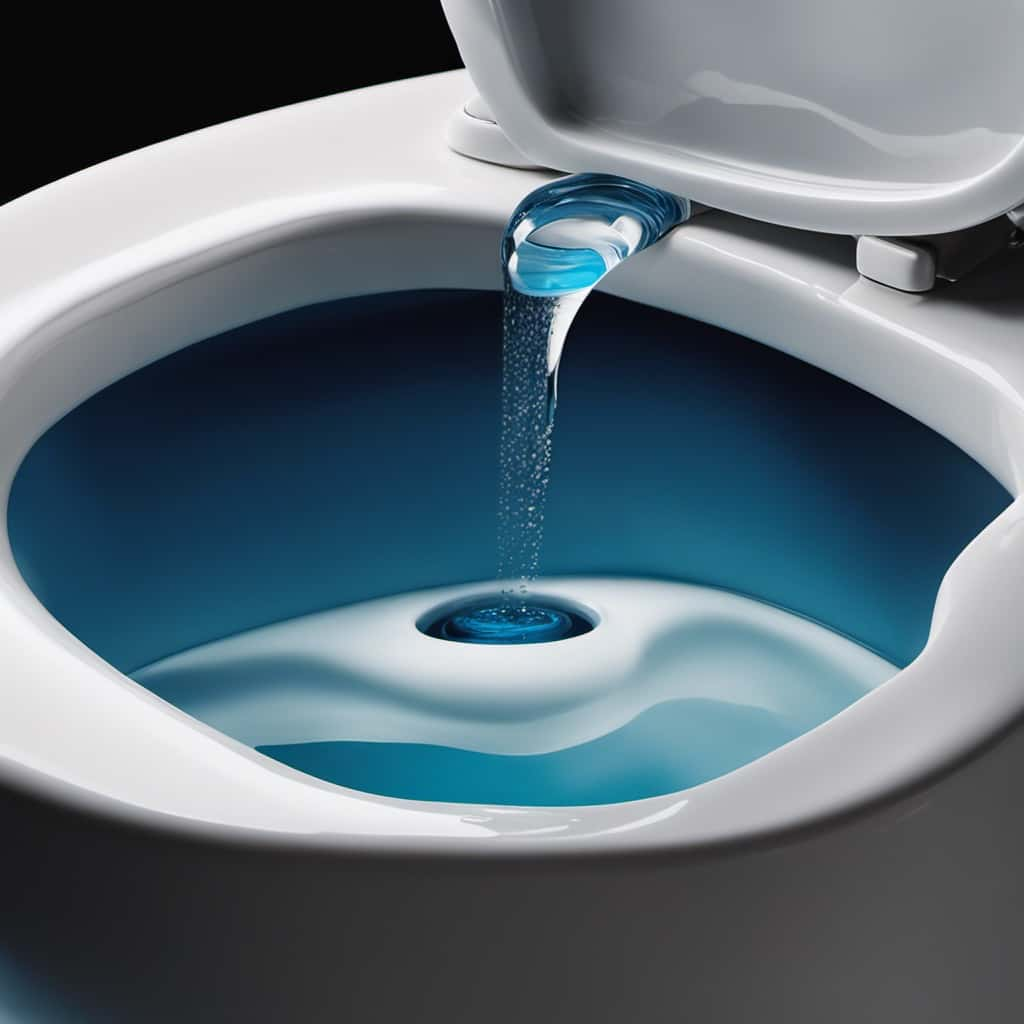
Conclusion
In conclusion, removing a napkin from a toilet can be a challenging task. By using the right tools such as a plunger, toilet auger, or wet/dry vacuum, it’s possible to successfully retrieve the napkin. However, if all else fails, it’s advisable to call a professional plumber for assistance.
Interestingly, a study revealed that around 20% of plumbing emergencies are caused by foreign objects in toilets, emphasizing the importance of proper waste disposal to avoid such situations.
